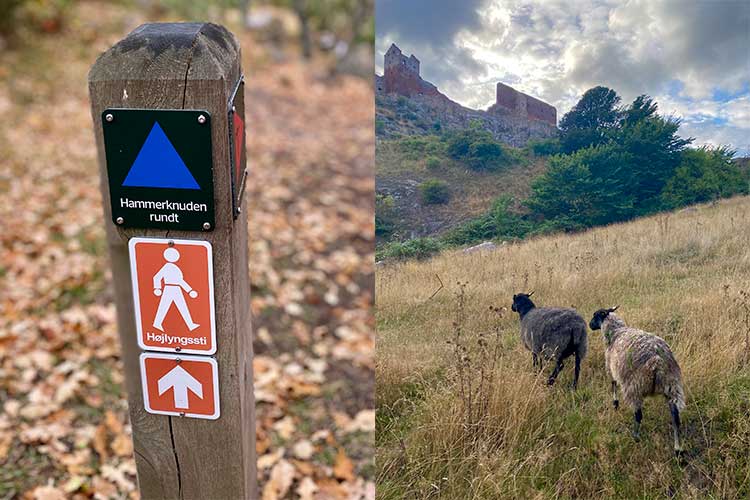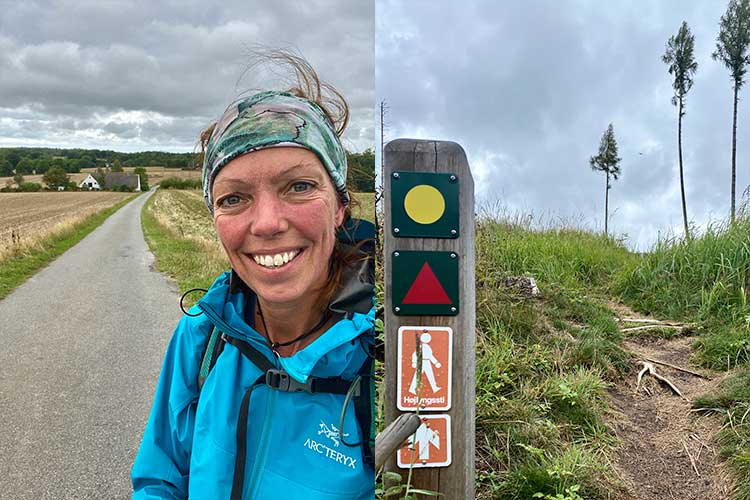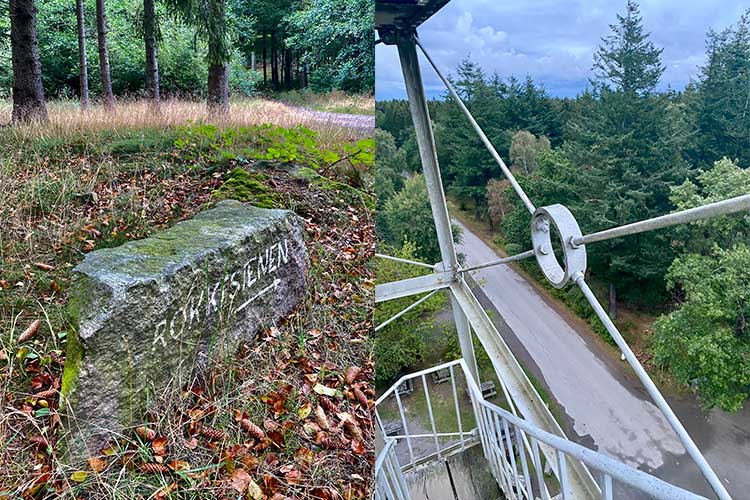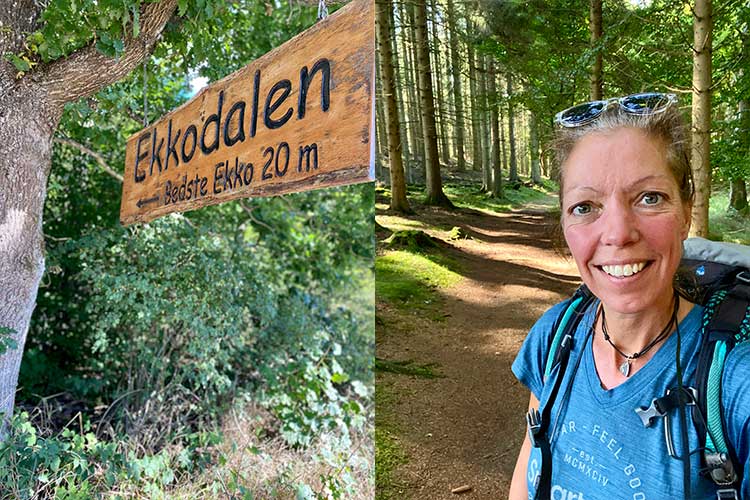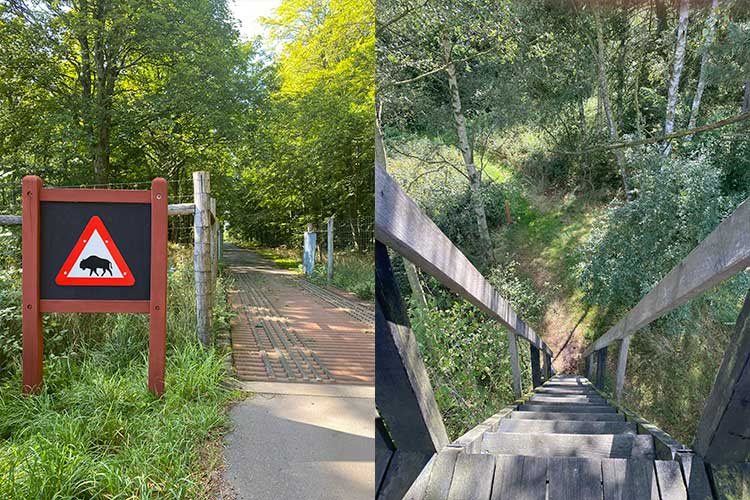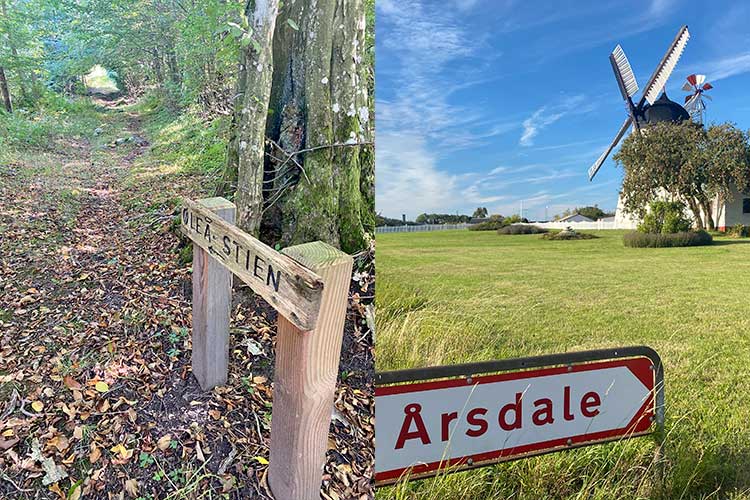Facts about Højlyngsstien
Below you will find relevant facts about the trail:
How long is the trail? It is 67 kilometres and runs through forest, rocky valleys and heather-clad grasslands.
Where does it begin and end? It begins on the beach in Sandvig, just after the campsite, and ends at the coast in Årsdale, just behind Årsdale Mill.
How hard is it? It varies from easy to difficult. Parts of the trail are on country roads and bicycle paths on either asphalt or gravel, while others are on narrow winding and occasionally swampy footpaths or forest paths. On Hammerknuden in particular and in Paradisbakkerne, it is also hilly with several ascents and descents.
In which direction should I walk? You can walk it in both directions, but be aware that if you go from Årsdale, you begin with three kilometres of the country road towards Paradisbakkerne, and you’ll have no accommodation until after about 20 kilometres. If you go in the opposite direction, you begin with the trail’s most hilly but very beautiful eight kilometres on the northern tip of Bornholm.
How about the weather? Wind and the sun’s direction doesn’t matter as much as on the coastal path because you walk a lot in the woods, but if you prefer the sun in the back, you should begin in Årsdale.
How do I get to and from the trail? From Rønne, there are buses to both Sandvig and Årsdale, depending on where you want to begin the hike. Check bat.dk. At both ends of the path, you reach the Coastal Path and can continue the trek along with it. You can also catch a bus to Rønne – or somewhere else on Bornholm – in both Sandvig and Årsdale – if your hike ends here.
What about food? Bring food for the whole trip or check the opening hours at Christianshøjkroen, Ekkodalshuset and Restaurant Bolsterbjerg, which are the only restaurants and cafés you pass. In addition, there is a small kiosk at Rytterknægten, in Ekkodalen and in Hammershus Besøgscenter – also check the opening hours on them. The nearest grocery stores are in Klemensker, Østerlars, Østermarie and Vestermarie – all four cities are about five kilometres away (each way).
What about water? There are water posts and public restrooms along the trail. However, there is a long way between some of them, so bring water for the long distances. Download the findtoilet app (Android), which tells you where the restrooms are.
Where should I sleep? There are several shelter or tent sites along the way, just as there is free tenting in Rø Plantation and northern Almindingen. It is most apparent to sleep primitively because there are a limited selection of bed and breakfasts near the trail.
Can I walk the trail all year round? Yes, you can easily do that if you have the right clothes and footwear. Be aware, however, that the few restaurants and cafes along the trail are not necessarily open all year round and that the trail is swampy in some places, so keep that in mind, especially in the typically wet seasons.
How many days does the trip take? It depends on how fast you walk but expect 3-5 days.
Would I walk the trail again? Yes, definitely. Especially the last three stages – the stretch between Udkæret and Årsdale – because here you go through some of Bornholm’s wildest nature.
